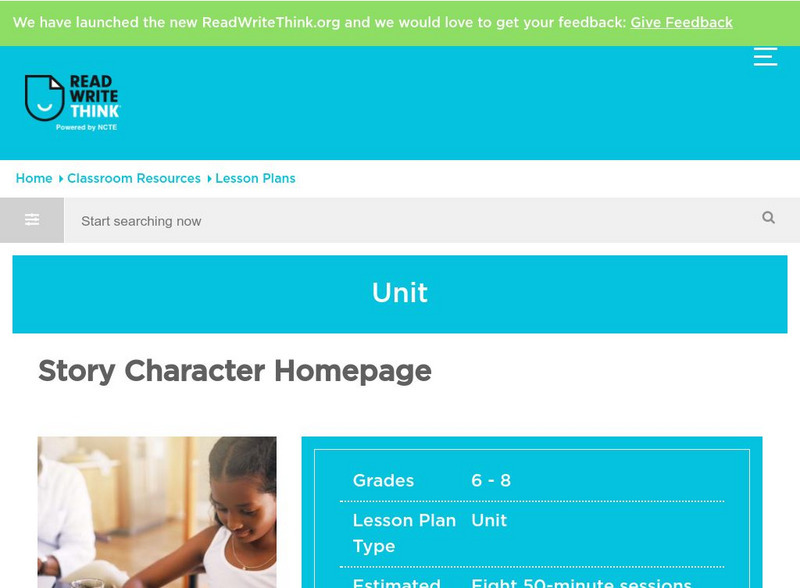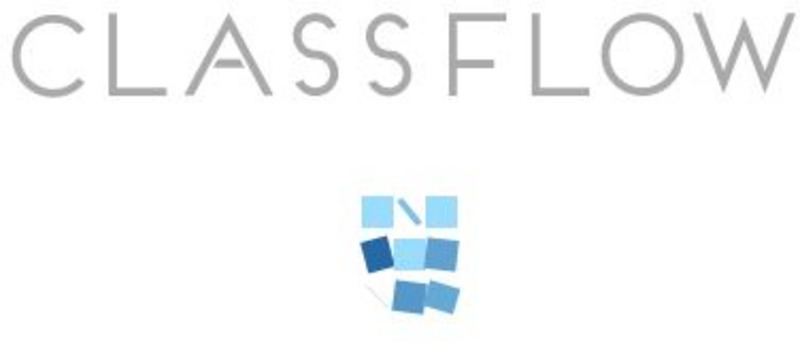Curated OER
Hawthorne's "The Scarlet Letter"
Eleventh graders read Hawthorne's, "The Scarlet Letter" prior to doing the project. They find a contemporary person who has been shunned by society, write an essay, and give an oral presentation about the person.
Curated OER
Persuasion
Middle schoolers read various stories and write reflections in their journals. Using the text, they identify the techniques the characters used in persuading the reader or other characters in the story.They rewrite a fairy tale from the...
Curated OER
Nursery Rhymes
Students recall details of nursery rhyme read by teacher, identify main characters, and demonstrate knowledge of poem by creating concept map about story that includes title, clip art, and changes in font and color.
Curated OER
Titanic
Students conduct research with the purpose of writing a report about the Titanic. They use a variety of resources. The students produce a written document that has plenty of documented information. They also compare the information that...
Curated OER
Using Political Cartoons and Propaganda in Teaching the Holocaust
Students gain an understanding of the Holocaust through analysis of political cartoons. In this Holocaust lesson, students examine propaganda in political cartoons that were used in Nazi Germany.
Curated OER
A Turkey for Thanksgiving - Lesson #2
Second graders investigate realistic fiction, holiday celebrations, making tally charts. In this multi-disciplinary lesson, 2nd graders listen to a story about Thanksgiving and one about the Chinese New Year to develop an understanding...
Curated OER
Meet the Press
Students give their book reports as oral "Meet the Press" type interviews. They team up with another student "reporter" and answer questions about main idea, details, and the point of view.
Curated OER
Art as Storyteller
Students examine how paintings tell stories. They read biographies about artists, analyze paintings, research and write the art history of a painting, write a creative story based on the painting, and create a painting in the artist's...
Curated OER
Fantasy Book Report
Fourth graders choose a fantasy genre to research and summarize information on in text. They utilize a variety of communication techniques, including oral, visual as well as written/multimedia reports and then present information...
Curated OER
Home Child Arthur and Grandma Wilson
In this Language Arts worksheet, students read a quote from the novel Home Child about the friendship between Arthur and Grandma Wilson. Students also list the ways Grandma Wilson stood up for Arthur.
Curated OER
Puzzle Mystery
Students are given a small detail of a painting, give it a title, and try to guess what the whole painting is. In this painting lesson plan, students put all of their details together to make the full painting.
Curated OER
Southern Puritanism and Tennessee Williams
Students write an essay comparing Arthur Mille's The Crucible and one of Tennessee Williams' plays. In this Tennessee Williams instructional activity, students discuss the influence of Puritanism on modern American drama....
Curated OER
Charlotte's Web Venn Diagram
Young scholars, together as a class, construct a Venn diagram of characteristics they see in two classmates. Then, they independently create another Venn diagram comparing/contrasting two characters from the story Charlotte's Web. They...
Curated OER
You Can Do It, Mr. And Mrs. Mallard!
Students watch the video "Make Way for Ducklings" by Robert Mc Closkey. They write letters to Mr. and Mrs. Mallard and make a map for the mallards. They talk about the importance of animal habitats.
Curated OER
Transforming Negatives to Positives
Pupils create double-exposed photographs, poetry, and multimedia presentations to celebrate their Open Court "City Wildlife" unit.
Curated OER
GODS OF THUNDER: Myths and Mythical Characters
Students explore the myths and legends of the Ancient Greek and Romans in the ten lessons of this unit. Students compare and contrast the myths and the cultures that created them. Norse myths are included in this unit.
Curated OER
Using Story Structure to Enhance Comprehension
In these story structure worksheets, students review story structure and learn how to use story maps to help with their reading comprehension. Students review an example story map and then study three different graphic organizer versions...
Curated OER
Mary Had A Little Lamb
Fourth graders listen and observe the role play of the various versions of the poem. They take notes while listening and observing and develop their own versions of "Mary Had a Little Lamb".
Annenberg Foundation
Annenberg Learner: Literary Visions
Twenty-six half hour videos on literary analysis for high school students that feature authors, scholars, actors and noted critics. Topics include The Art of the Essay, Setting and Character in Short Fiction, Responding to Literature and...
Annenberg Foundation
Annenberg Learner: Interactives: Elements of a Story
Explore the elements of a story using the well-known Cinderella story as source material. Learn about setting, character, sequence, exposition, conflict, climax, and resolution.
ReadWriteThink
Read Write Think: Story Character Homepage
Online lesson which allows for students to create an electronic "Home page," for a specific character when reading a class novel. Students research and create web pages, then present findings to the class.
ClassFlow
Class Flow: Literary Elements
[Free Registration/Login Required] This flipchart allows students to be actively engaged in identifying and describing story elements. It uses the Learning Focus lesson plan format, such as an activator, graphic organizers, modeling,...
ReadWriteThink
Read Write Think: Character, Conflict, Resolution, Setting
This interactive lesson allows students to study and analyze the text concepts of character, conflict, resolution, and setting in a "Broadcast news," format.
ReadWriteThink
Read Write Think: Book Report Alternative: Examine Story Elements Using Comic Stri
Comic frames are traditionally used to illustrate a story in a short, concise format. In this lesson, learners use a six-paneled comic strip frame to create a story map, summarizing a book or story that they have read. Each panel retells...























